本文的分布宗旨在于通过简单干净实践的方式,向读者介绍 Zookeeper 的式配安装配置,学习 SpringBoot 整合使用,置中以及基于 Zookeeper 开发一个简单的配置中心功能内核。通过这样的实践方式,让读者入门和掌握 Zookeeper 以应对后续需要此技术栈的相关开发项目。
本文的重点是基于 Zookeeper 实现的配置中心,那配置中心是啥呢?
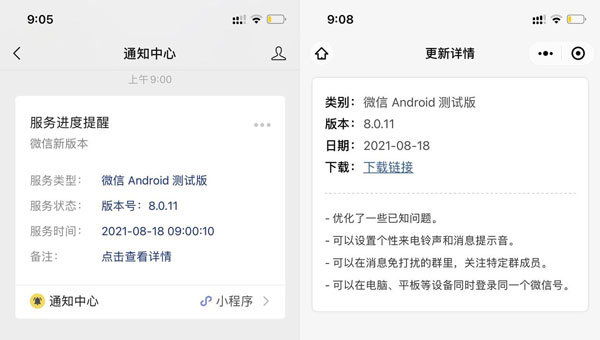
配置中心在大厂系统开发中是一个非常常用的功能,它的核心功能在于不需要上线系统的情况下,改变系统中对象或者属性的值。是属性的值,也就是你在通过类获取某个属性,判断;功能开关、渠道地址、人群名单、息费费率、切量占比等等,这些可能随时动态调整的值,都是通过配置中心实现的。所以在本章节的案例中,小傅哥基于 Zookeeper 组件的功能特性,来设计这样一个配置中心,方便大家学习。
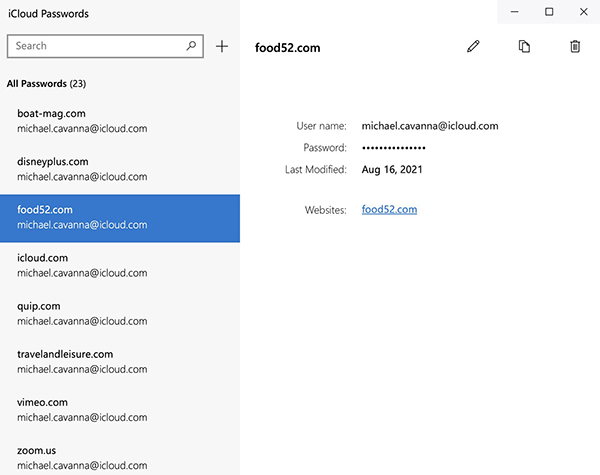
本文涉及的工程:
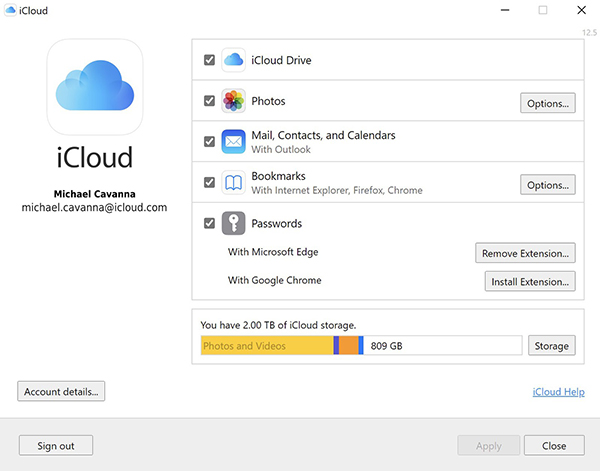
Zookeeper 有什么特性,动态配置中心怎么做?
技术是支撑解决方案实现的,有了各个技术栈组件的自身特点,才好实现出我们所需的各类功能。那么这样的一个能让,各个服务都可以动态变更配置的配置中心,就要用到 Zookeeper 的节点监听和节点值的变化来动态设置 Java 类中属性的变化。如图:
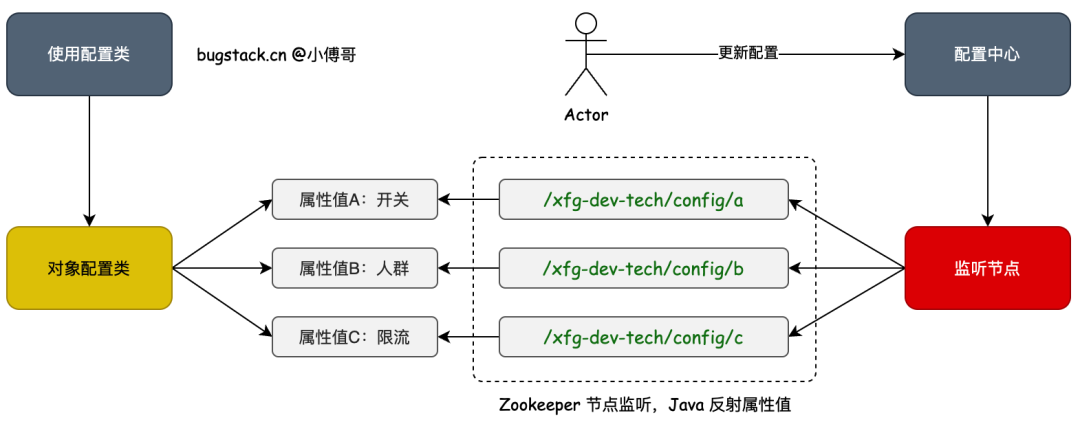 图片
图片
在安装执行 docker-compose.yml 脚本之前,你需要先在本地安装 docker 之后 IntelliJ IDEA 打开 docker-compose.yml 文件,如图操作即可安装。
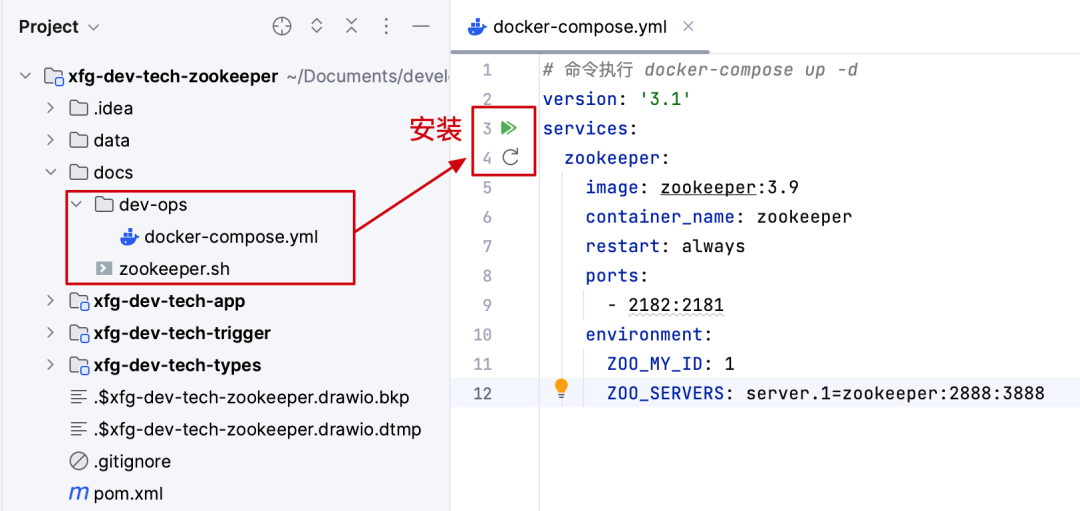 图片
图片
 图片
图片
连接脚本:
docker exec -it zookeeper bashzkCli.sh -server IP(替换为你自己的):2181常用命令:
1. 创建节点:create /path data2. 创建临时节点:create -e /path data3. 创建顺序节点:create -s /path data4. 创建临时顺序节点:create -e -s /path data5. 获取节点数据:get /path6. 获取节点子节点列表:ls /path7. 更新节点数据:set /path data8. 删除节点:delete /path9. 删除节点及其子节点:deleteall /path10. 监听节点变化:get -w /path11. 查看节点状态:stat /path12. 查看节点ACL权限:getAcl /path13. 设置节点ACL权限:setAcl /path acl14. 查看节点子节点数量:count /path15. 查看节点子节点数量并监听变化:count -w /pathroot@4365b68d50d6:/apache-zookeeper-3.9.0-bin# lsbin conf docs lib LICENSE.txt NOTICE.txt README.md README_packaging.mdroot@4365b68d50d6:/apache-zookeeper-3.9.0-bin# zkCli.sh -server 10.253.6.71:2181[zk: 192.168.1.101:2181(CONNECTED) 1] ls /xfg-dev-tech[config, configdowngradeSwitch][zk: 192.168.1.101:2181(CONNECTED) 2]执行完链接 Zookeeper 以后,就可以执行这些常用命令了。你也可以尝试着练习下这些命令。
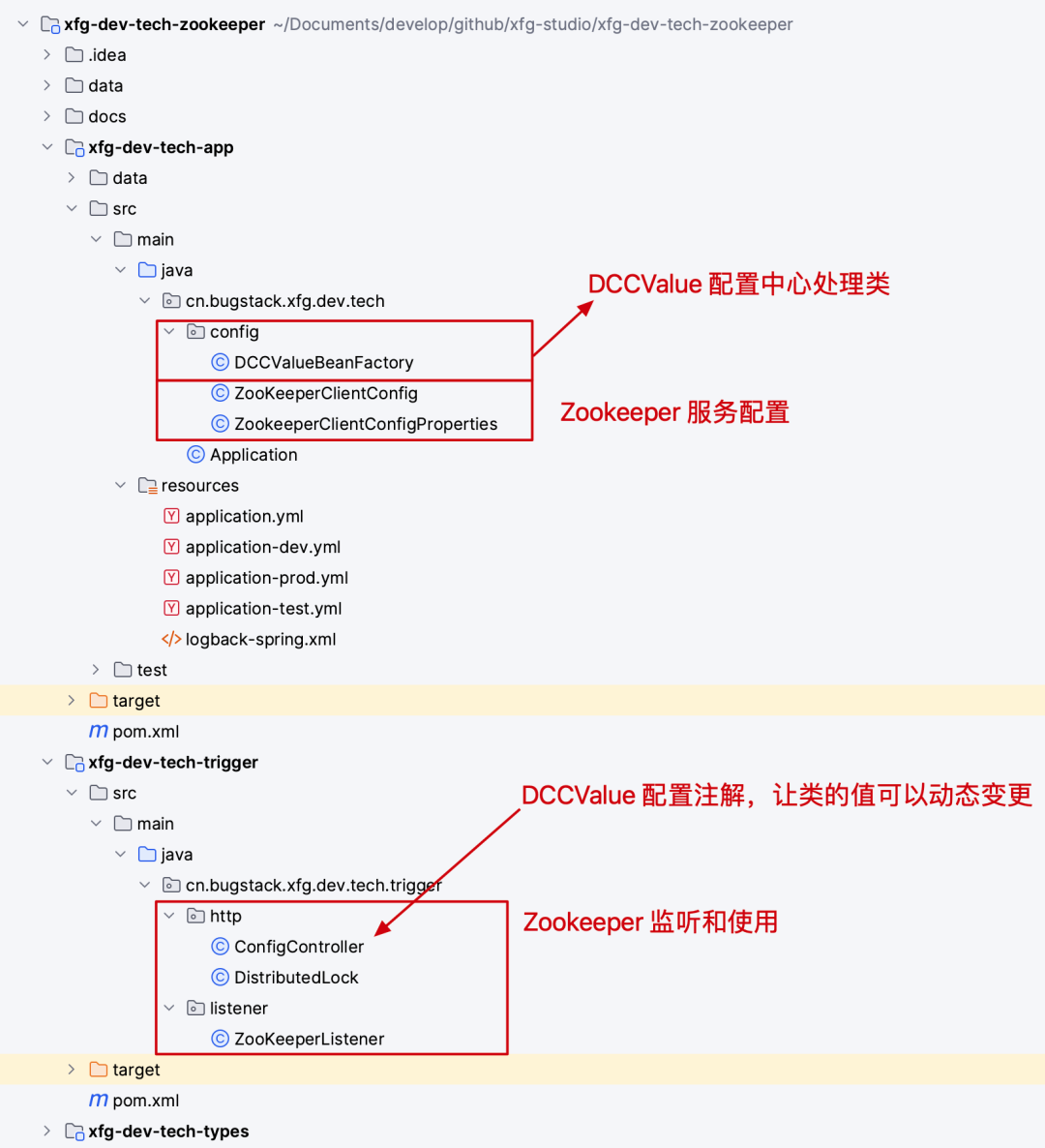 图片
图片
工程结构分为2个部分:
@Data@ConfigurationProperties(prefix = "zookeeper.sdk.config", ignoreInvalidFields = true)public class ZookeeperClientConfigProperties { private String connectString; private int baseSleepTimeMs; private int maxRetries; private int sessionTimeoutMs; private int connectionTimeoutMs;}zookeeper: sdk: config: connect-string: 10.253.6.71:2181 base-sleep-time-ms: 1000 max-retries: 3 session-timeout-ms: 1800000 connection-timeout-ms: 30000@Configuration@EnableConfigurationProperties(ZookeeperClientConfigProperties.class)public class ZooKeeperClientConfig { /** * 多参数构建ZooKeeper客户端连接 * * @return client */ @Bean(name = "zookeeperClient") public CuratorFramework createWithOptions(ZookeeperClientConfigProperties properties) { ExponentialBackoffRetry backoffRetry = new ExponentialBackoffRetry(properties.getBaseSleepTimeMs(), properties.getMaxRetries()); CuratorFramework client = CuratorFrameworkFactory.builder() .connectString(properties.getConnectString()) .retryPolicy(backoffRetry) .sessionTimeoutMs(properties.getSessionTimeoutMs()) .connectionTimeoutMs(properties.getConnectionTimeoutMs()) .build(); client.start(); return client; }}就功能来讲,我们需要对类中的属性进行赋值操作。那么就需要使用自定义注解进行标记。所以这里我们先自定义一个注解。
@Retention(RetentionPolicy.RUNTIME)@Target({ ElementType.FIELD})@Documentedpublic @interface DCCValue { String value() default "";}源码:cn.bugstack.xfg.dev.tech.config.DCCValueBeanFactory#postProcessAfterInitialization
@Overridepublic Object postProcessAfterInitialization(Object bean, String beanName) throws BeansException { Class<?> beanClass = bean.getClass(); Field[] fields = beanClass.getDeclaredFields(); for (Field field : fields) { if (field.isAnnotationPresent(DCCValue.class)) { DCCValue dccValue = field.getAnnotation(DCCValue.class); try { if (null == client.checkExists().forPath(BASE_CONFIG_PATH.concat("/").concat(dccValue.value()))) { client.create().creatingParentsIfNeeded().forPath(BASE_CONFIG_PATH.concat("/").concat(dccValue.value())); log.info("DCC 节点监听 listener node { } not absent create new done!", BASE_CONFIG_PATH.concat("/").concat(dccValue.value())); } } catch (Exception e) { throw new RuntimeException(e); } dccObjGroup.put(BASE_CONFIG_PATH.concat("/").concat(dccValue.value()), bean); } } return bean;}源码:cn.bugstack.xfg.dev.tech.config.DCCValueBeanFactory#DCCValueBeanFactory
curatorCache.listenable().addListener((type, oldData, data) -> { switch (type) { case NODE_CHANGED: String dccValuePath = data.getPath(); Object objBean = dccObjGroup.get(dccValuePath); try { // 1. getDeclaredField 方法用于获取指定类中声明的所有字段,包括私有字段、受保护字段和公共字段。 // 2. getField 方法用于获取指定类中的公共字段,即只能获取到公共访问修饰符(public)的字段。 Field field = objBean.getClass().getDeclaredField(dccValuePath.substring(dccValuePath.lastIndexOf("/") + 1)); field.setAccessible(true); field.set(objBean, new String(data.getData())); field.setAccessible(false); } catch (Exception e) { throw new RuntimeException(e); } break; default: break; }});源码:cn.bugstack.xfg.dev.tech.trigger.http.ConfigController
@RestControllerpublic class ConfigController { @DCCValue("downgradeSwitch") private String downgradeSwitch; @DCCValue("userWhiteList") private String userWhiteList; @Resource private CuratorFramework curatorFramework; /** * curl http://localhost:8091/getConfig/downgradeSwitch */ @RequestMapping("/getConfig/downgradeSwitch") public String getConfigDowngradeSwitch() { return downgradeSwitch; } /** * curl http://localhost:8091/getConfig/userWhiteList */ @RequestMapping("/getConfig/userWhiteList") public String getConfigUserWhiteList() { return userWhiteList; } /** * curl -X GET "http://localhost:8091/setConfig?downgradeSwitch=false&userWhiteList=xfg,user2,user3" */ @GetMapping("/setConfig") public void setConfig(Boolean downgradeSwitch, String userWhiteList) throws Exception { curatorFramework.setData().forPath("/xfg-dev-tech/config/downgradeSwitch", (downgradeSwitch ? "开" : "关").getBytes(StandardCharsets.UTF_8)); curatorFramework.setData().forPath("/xfg-dev-tech/config/userWhiteList", userWhiteList.getBytes(StandardCharsets.UTF_8)); } }这里的核心验证就是让 downgradeSwitch、userWhiteList 这2个属性值可以动态变化;
 图片
图片
你可以按照如图的操作顺序,进行验证属性值的变化。
@Slf4j@RunWith(SpringRunner.class)@SpringBootTestpublic class ApiTest { @Resource private CuratorFramework curatorFramework; @Test public void test_all() throws Exception { String path = "/xfg-dev-tech/config/downgradeSwitch"; String data = "0"; curatorFramework.create().withMode(CreateMode.EPHEMERAL).forPath(path, data.getBytes(StandardCharsets.UTF_8)); for (int i = 0; i < 2; i++) { curatorFramework.setData().forPath(path, String.valueOf(i).getBytes(StandardCharsets.UTF_8)); } } /** * 创建永久节点 */ @Test public void createNode() throws Exception { String path = "/xfg-dev-tech/config/downgradeSwitch/test/a"; String data = "0"; if (null == curatorFramework.checkExists().forPath(path)) { curatorFramework.create().creatingParentsIfNeeded().forPath(path); } } /** * 创建临时节点 */ @Test public void createEphemeralNode() throws Exception { String path = "/xfg-dev-tech/config/epnode"; String data = "0"; curatorFramework.create().withMode(CreateMode.EPHEMERAL).forPath(path, data.getBytes(StandardCharsets.UTF_8)); } /** * 创建临时有序节点 */ @Test public void crateEphemeralSequentialNode() throws Exception { String path = "/xfg-dev-tech/config/epsnode"; String data = "0"; curatorFramework.create() .withMode(CreateMode.EPHEMERAL_SEQUENTIAL) .forPath(path, data.getBytes(StandardCharsets.UTF_8)); } /** * 往节点种设置数据 */ @Test public void setData() throws Exception { curatorFramework.setData().forPath("/xfg-dev-tech/config/downgradeSwitch", "111".getBytes(StandardCharsets.UTF_8)); curatorFramework.setData().forPath("/xfg-dev-tech/config/userWhiteList", "222".getBytes(StandardCharsets.UTF_8)); } @Test public void getData() throws Exception { String downgradeSwitch = new String(curatorFramework.getData().forPath("/xfg-dev-tech/config/downgradeSwitch"), StandardCharsets.UTF_8); log.info("测试结果: { }", downgradeSwitch); String userWhiteList = new String(curatorFramework.getData().forPath("/xfg-dev-tech/config/userWhiteList"), StandardCharsets.UTF_8); log.info("测试结果: { }", userWhiteList); } /** * 异步修改数据 */ @Test public void setDataAsync() throws Exception { String path = "/xfg-dev-tech/config/downgradeSwitch"; String data = "0"; CuratorListener listener = (client, event) -> { Stat stat = event.getStat(); log.info("stat=" + JSON.toJSONString(stat)); CuratorEventType eventType = event.getType(); log.info("eventType=" + eventType.name()); }; curatorFramework.getCuratorListenable().addListener(listener); curatorFramework.setData().inBackground().forPath(path, data.getBytes(StandardCharsets.UTF_8)); } /** * 删除节点 */ @Test public void deleteData() throws Exception { String path = "/xfg-dev-tech/config/downgradeSwitch"; curatorFramework.delete().deletingChildrenIfNeeded().forPath(path); } /** * 安全删除节点 */ @Test public void guaranteedDeleteData() throws Exception { String path = "/xfg-dev-tech/config/downgradeSwitch"; curatorFramework.delete().guaranteed().forPath(path); } /** * 获取子节点下的全部子节点路径集合 */ @Test public void watchedGetChildren() throws Exception { String path = "/xfg-dev-tech"; List<String> children = curatorFramework.getChildren().watched().forPath(path); log.info("测试结果:{ }", JSON.toJSONString(children)); } /** * 获取节点数据 */ @Test public void getDataByPath() throws Exception { String path = "/xfg-dev-tech/config/downgradeSwitch"; String fullClassName = ""; String jsonStr = new String(curatorFramework.getData().forPath(path), StandardCharsets.UTF_8); Class clazz = Class.forName(fullClassName); log.info("测试结果:{ }", JSON.parseObject(jsonStr, clazz)); }}(责任编辑:热点)
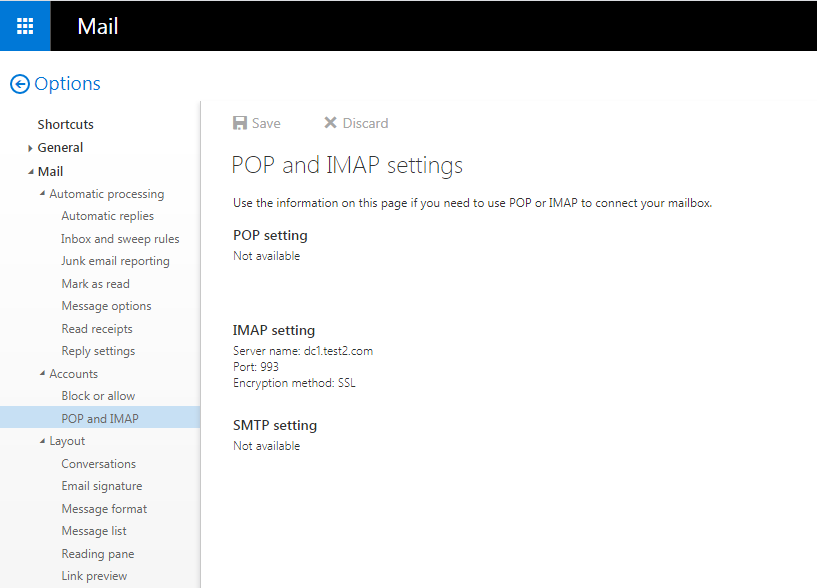 苏宁易购(002024)2021年3月23日融资融券信息显示,苏宁易购融资余额3,515,840,678元,融券余额18,514,178元,融资买入额16,294,686元,融资偿还额11,938,9
...[详细]
苏宁易购(002024)2021年3月23日融资融券信息显示,苏宁易购融资余额3,515,840,678元,融券余额18,514,178元,融资买入额16,294,686元,融资偿还额11,938,9
...[详细] 离开理塘,直奔稻城香格里拉小镇;天色渐晚,云聚一侧,马上就要下雨了;我们还是收起好玩的心,继续赶路吧;老西门的G318地标先不拍了,反正回程还要路过;离开理塘,直奔稻城香格里拉小镇;从理塘到稻城这一路
...[详细]
离开理塘,直奔稻城香格里拉小镇;天色渐晚,云聚一侧,马上就要下雨了;我们还是收起好玩的心,继续赶路吧;老西门的G318地标先不拍了,反正回程还要路过;离开理塘,直奔稻城香格里拉小镇;从理塘到稻城这一路
...[详细] 新酷产品第一时间免费试玩,还有众多优质达人分享独到生活经验,快来新浪众测,体验各领域最前沿、最有趣、最好玩的产品吧~!下载客户端还能获得专享福利哦!9月1日消息,目前比亚迪仰望家族已经推出了U8、U9
...[详细]
新酷产品第一时间免费试玩,还有众多优质达人分享独到生活经验,快来新浪众测,体验各领域最前沿、最有趣、最好玩的产品吧~!下载客户端还能获得专享福利哦!9月1日消息,目前比亚迪仰望家族已经推出了U8、U9
...[详细] 冰箱、洗衣机作为家里的大家电,是必不可少的。7月10至7月11日京东举办了夏日大作战的冰洗优惠大酬宾,让你在这个夏天穿的凉爽,喝的冰爽。此次京东家电的夏日大作战,优惠多多,三门电脑风冷冰箱直降至惊爆价
...[详细]
冰箱、洗衣机作为家里的大家电,是必不可少的。7月10至7月11日京东举办了夏日大作战的冰洗优惠大酬宾,让你在这个夏天穿的凉爽,喝的冰爽。此次京东家电的夏日大作战,优惠多多,三门电脑风冷冰箱直降至惊爆价
...[详细] 4月22日,从中国五矿获悉,一季度,中国五矿营收同比增长11.9%,创历史同期最高;利润、净利润双双大幅超出预期,运行效率整体显著改善。一季度,中国五矿金属矿业利润总额同比增长23%,冶金建设营收同比
...[详细]
4月22日,从中国五矿获悉,一季度,中国五矿营收同比增长11.9%,创历史同期最高;利润、净利润双双大幅超出预期,运行效率整体显著改善。一季度,中国五矿金属矿业利润总额同比增长23%,冶金建设营收同比
...[详细] 文 | 新浪财经 徐苑蕾2023年地产困境加剧,楼市未见好转,曾经和万科齐头并进的多家民企已经倒在黎明前,而高喊着“活下去”的万科,则交出了近20年来首份营收和利润均下降的半年报。万科A的股价今年也已
...[详细]
文 | 新浪财经 徐苑蕾2023年地产困境加剧,楼市未见好转,曾经和万科齐头并进的多家民企已经倒在黎明前,而高喊着“活下去”的万科,则交出了近20年来首份营收和利润均下降的半年报。万科A的股价今年也已
...[详细]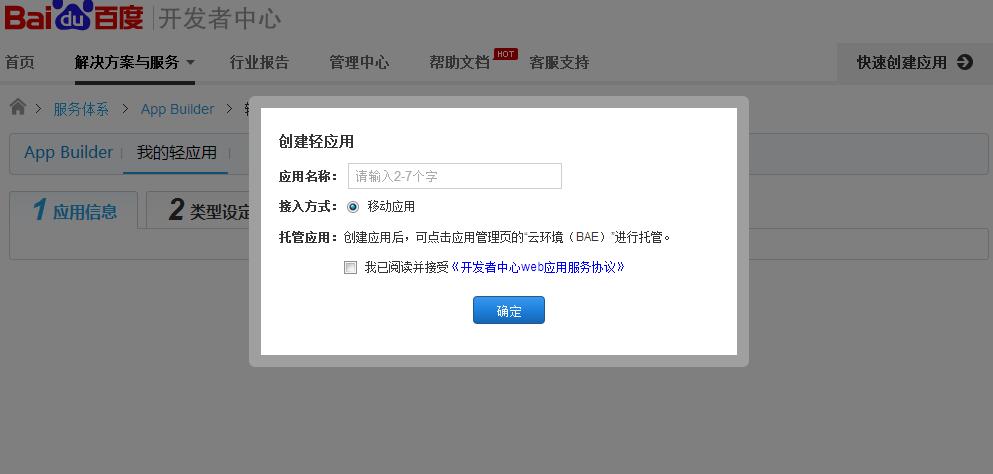 AWE中国家电及消费电子博览会是中国大陆地区规模最大的家电类产品博览会,每年的AWE会吸引数百家家电企业,包括厨卫、白电和电视及尖端设备企业。其中在电视领域AWE历来是各大品牌展现实力的大舞台。前言据
...[详细]
AWE中国家电及消费电子博览会是中国大陆地区规模最大的家电类产品博览会,每年的AWE会吸引数百家家电企业,包括厨卫、白电和电视及尖端设备企业。其中在电视领域AWE历来是各大品牌展现实力的大舞台。前言据
...[详细] 新酷产品第一时间免费试玩,还有众多优质达人分享独到生活经验,快来新浪众测,体验各领域最前沿、最有趣、最好玩的产品吧~!下载客户端还能获得专享福利哦!9月1日消息,此前moto品牌透露将发布一款千元级别
...[详细]
新酷产品第一时间免费试玩,还有众多优质达人分享独到生活经验,快来新浪众测,体验各领域最前沿、最有趣、最好玩的产品吧~!下载客户端还能获得专享福利哦!9月1日消息,此前moto品牌透露将发布一款千元级别
...[详细]国科微(300672.SZ):股东陈岗解除质押245万股 占其所持股份比例22.32%
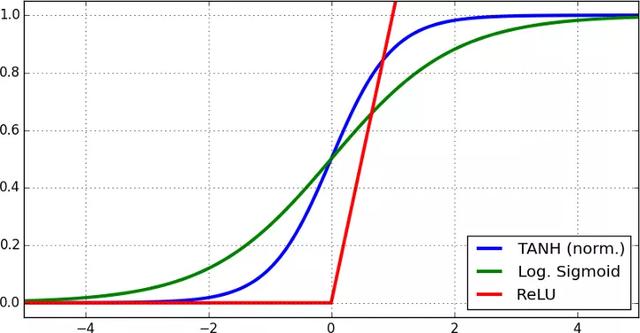 国科微(300672.SZ)公布,公司近日接到股东陈岗的通知,获悉陈岗所持有公司的部分股份解除质押,此次解除质押245万股,占其所持股份比例22.32%。
...[详细]
国科微(300672.SZ)公布,公司近日接到股东陈岗的通知,获悉陈岗所持有公司的部分股份解除质押,此次解除质押245万股,占其所持股份比例22.32%。
...[详细] 新酷产品第一时间免费试玩,还有众多优质达人分享独到生活经验,快来新浪众测,体验各领域最前沿、最有趣、最好玩的产品吧~!下载客户端还能获得专享福利哦!9月1日消息,目前比亚迪仰望家族已经推出了U8、U9
...[详细]
新酷产品第一时间免费试玩,还有众多优质达人分享独到生活经验,快来新浪众测,体验各领域最前沿、最有趣、最好玩的产品吧~!下载客户端还能获得专享福利哦!9月1日消息,目前比亚迪仰望家族已经推出了U8、U9
...[详细]